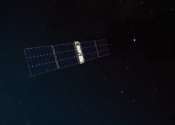Telescope to track space junk using youth radio station
A combination of pop songs, talkback radio and cutting-edge science has enabled Australian astronomers to identify a way to prevent catastrophic, multi-billion dollar space junk collisions, a new study has revealed.







